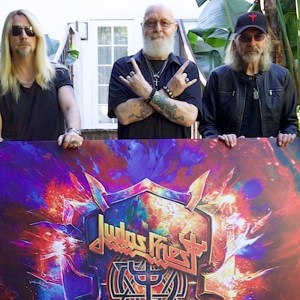February 24, 1982
The Shrine Auditorium
Los Angeles, California
Videos by American Songwriter
Quincy Jones was the big winner at the Grammys, taking home five awards. “Bette Davis Eyes” won Song of the Year. Double Fantasy by John Lennon and Yoko Ono won Album of the Year. And, a brand new category was introduced that year: Music Video.
MTV was quickly expanding and reaching more homes than ever. Artists like Sheena Easton, The Police, Rick Springfield, and Michael Jackson were all getting heavy airplay. The music video, as a promotional tool, was causing people to take notice.
The winner of the first-ever Grammy for Music Video of the Year was someone who was very familiar with the concept. It was former Monkee Michael Nesmith.
The Monkees was a groundbreaking television show about a struggling band scrambling to find a gig. They are always trying to find ways to pay the rent and hoping for their big break. The fact that The Monkees in real life sold millions of records was not a big surprise, as some of the best songwriters in the business were brought in to provide the material.
The four actors cast in the lead roles had varying degrees of musical experience. Micky Dolenz and Davy Jones had stage and television experience, while Peter Tork and Nesmith were coming more from a musical background.
Each episode of the show included one or two musical performances with either footage of the band performing, romping around with other characters in the show, or a combination of both. As songs like “Last Train to Clarksville” and “I’m a Believer” benefitted from being included in multiple episodes, Nesmith saw how powerful the visual element was to the success of a song.
After leaving The Monkees, Nesmith embarked on a solo career, fusing country and rock elements to make some of the best music of the time, even if the sales didn’t match those of The Monkees’ most successful releases.
In 1974, Nesmith created a production company called The Pacific Arts Productions, Inc. He used it to release his own musical projects as well as incorporating the home video concept. He wanted to produce a television special that could be sold on LaserDisc and videocassette. He had the vision of what would become the norm over the next two decades. The former Monkee had been releasing albums regularly, but he wanted to take it a step further. This was the chance for Nesmith to share more than just a collection of songs. The end result was called Elephant Parts.
The hour-long program featured a collection of skits, commercial parodies, and musical performances with conceptual themes that were co-written with Bill Dear. Nesmith approached the musical performances as mini-movies. He pulled together friends to help pitch in and shoot the segments. They took an old mechanic’s garage and converted it into a makeshift soundstage. One of the commercials for Nesmith’s current audio album, Live at the Palais, showed up on Saturday Night Live. It’s a spoof of a food preparation product using the vinyl record as the tool: “This fabulous new LP chops, dices, grinds, twist, folds, and agitates almost all of your favorite food.”
Nesmith speaks on the commentary track of the Elephant Parts DVD about purchasing time from NBC to run the “commercial” during Saturday Night Live. The only problem was everyone thought it was the show making fun of the album. “It was a complete backfire,” Nesmith said.
On the heels of Elephant Parts, Nesmith developed a show called PopClips. The 30-minute show would be broadcast on Nickelodeon and feature a veejay playing promotional music videos. It was the precursor to what the world would soon know as MTV.
A sequel to Elephant Parts was produced as a pilot for NBC. Television Parts aired on March 7, 1985. The show was picked up to be a series but only lasted five episodes before it got canceled. The final episode was 90 minutes and aired in the SNL time slot. The series featured up-and-coming comedians such as Jerry Seinfeld, Whoopi Goldberg, and Garry Shandling. Deep Thoughts by Jack Handey was a regular feature, and it would go on to be a recurring gag on SNL.
Pacific Arts Productions continued to release audio and video projects. Nesmith was interested in creating and gathering original video content. The company produced the movies Timerider: The Adventure of Lyle Swann, Repo Man, and Tapeheads. Nesmith entered into an agreement with PBS, and Pacific Arts started to distribute all of their home video projects. Disagreements arose and the deal was scrapped. Lawsuits ensued. The judgement was returned in favor of Nesmith.
Nesmith continued with his production company, although he told Entertainment Weekly at the time, “I may not get back in business at all. If you can’t trust PBS, who can you trust?”
As the internet came into everyone’s house, Nesmith continued the concept with Videoranch and Videoranch3D. He was always ahead of the curve.
Photo by Michael Ochs Archives/Getty Images
